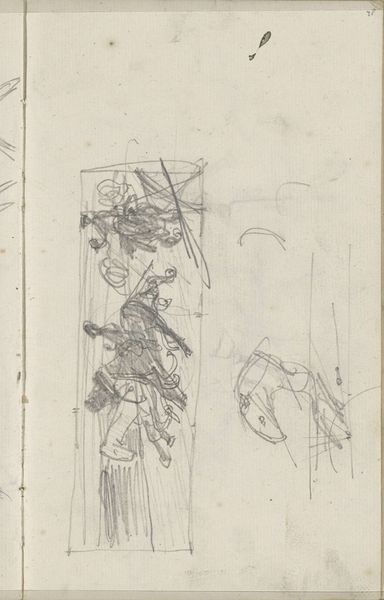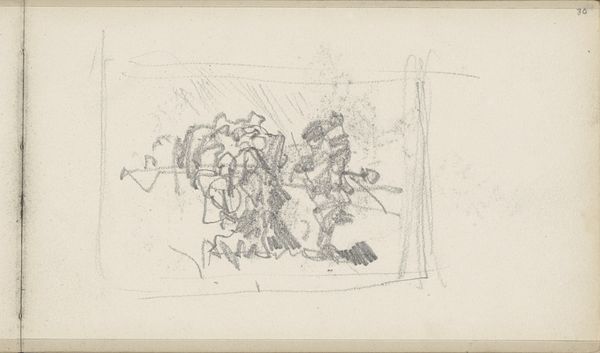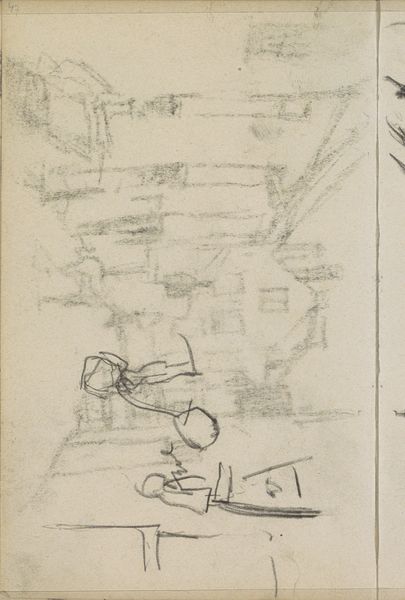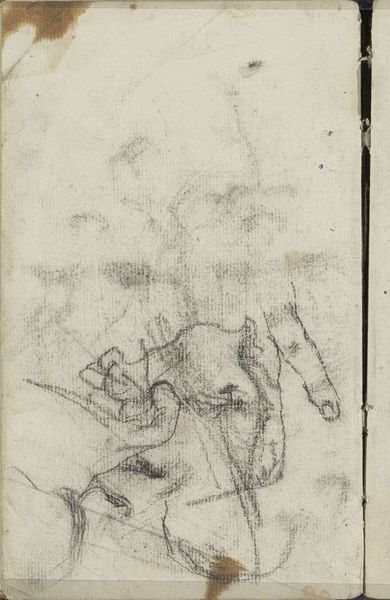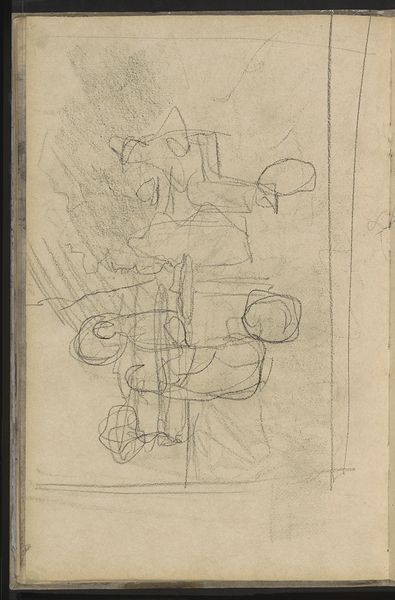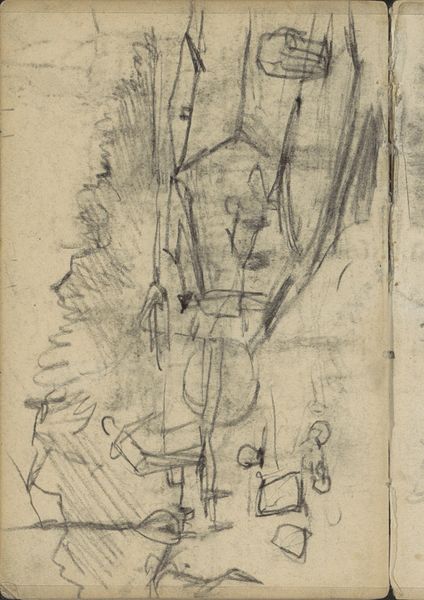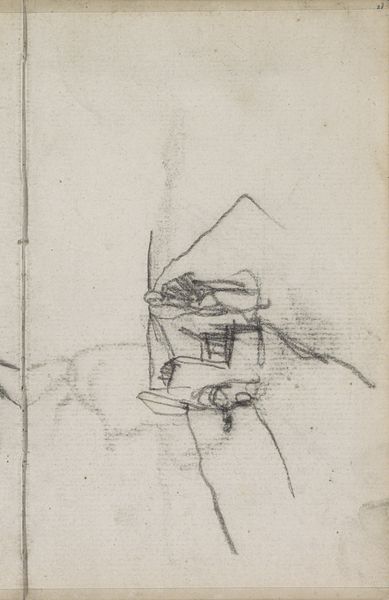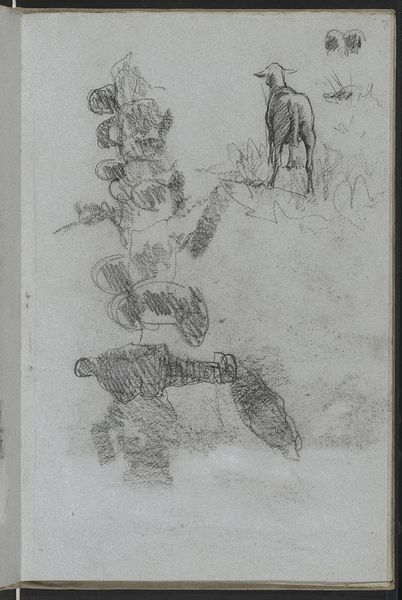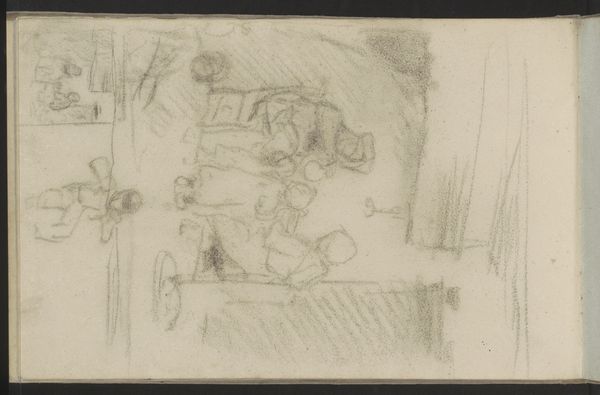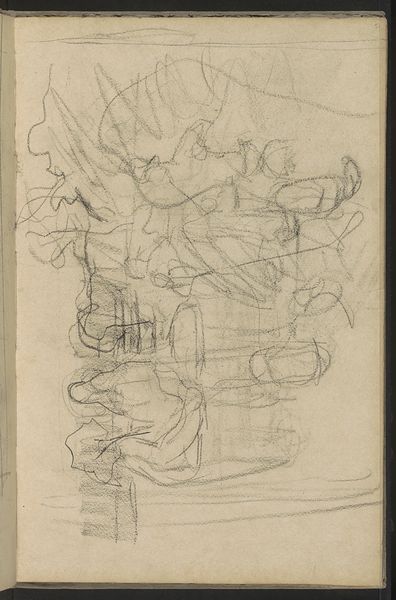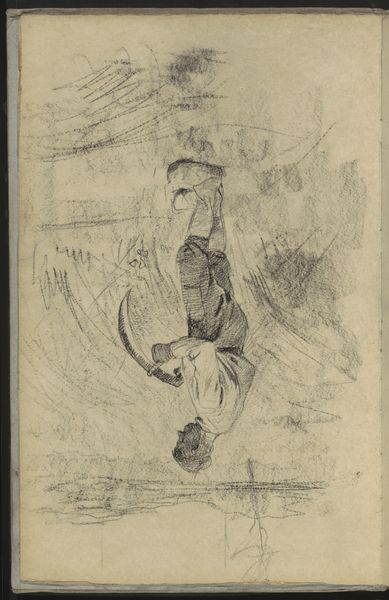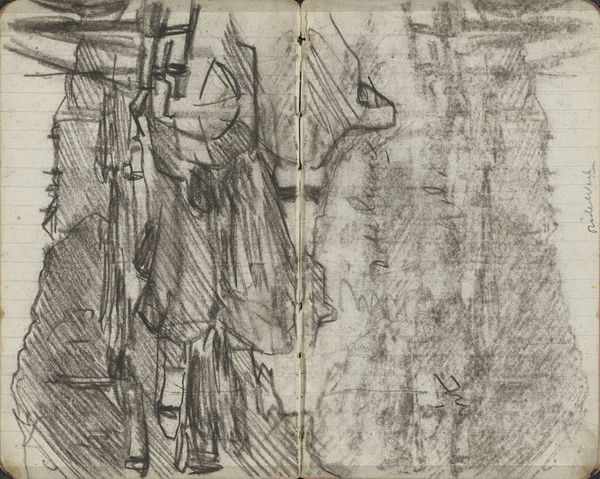
drawing, pencil, graphite
#
drawing
#
impressionism
#
landscape
#
sketch
#
pencil
#
graphite
Copyright: Rijks Museum: Open Domain
Editor: We're looking at Willem Witsen's "Landscape with a Seated Farmer," a pencil and graphite drawing from around 1884 to 1887, currently held at the Rijksmuseum. The sketchiness gives it an intimate, almost fleeting quality. What are your initial thoughts, considering the composition? Curator: The interest lies in the intrinsic interplay of line and form. Note how the artist employs a limited tonal range, relying on the density and direction of graphite strokes to define volume and spatial relationships. The 'landscape' exists primarily as suggested shapes, subordinated to the overall formal arrangement on the page. The farmer, presumably the focal point, seems almost incidental to the exploration of texture and compositional balance. What semiotic relationships do you observe? Editor: I notice the stark contrast between the densely worked areas and the untouched paper, creating a visual rhythm. I see also that it is drawn on one leaf of an open sketchbook; the framing, or attempted framing of the scene, highlights the performative nature of observing and drawing. Could the quickly drafted, sketchy appearance further imply a lack of commitment or seriousness about the farmer subject in the picture? Curator: Indeed. Witsen does not labour over meticulous details; he instead captures fleeting impressions with swift strokes. The artist prioritises formal investigations and mark-making over representation. This prioritisation moves beyond traditional landscape art and moves toward a form that anticipates twentieth-century abstraction. Can you see any examples of structuralism, a system of forms, beyond its immediate subject? Editor: Looking closely, it appears that the structure or formal system might also extend beyond the interior dimensions of the scene. The actual sketchbook’s rectangular boundary mirrors, as well as literally defines, the framing. It seems like two realities co-exist at once: reality as landscape, and reality as artistic artifact. I never considered that. Curator: Precisely. Understanding how an artist manipulates these elements can yield richer understandings. Editor: I see it now! I appreciate you walking me through how we can see a pencil drawing like this in a new way.
Comments
No comments
Be the first to comment and join the conversation on the ultimate creative platform.

